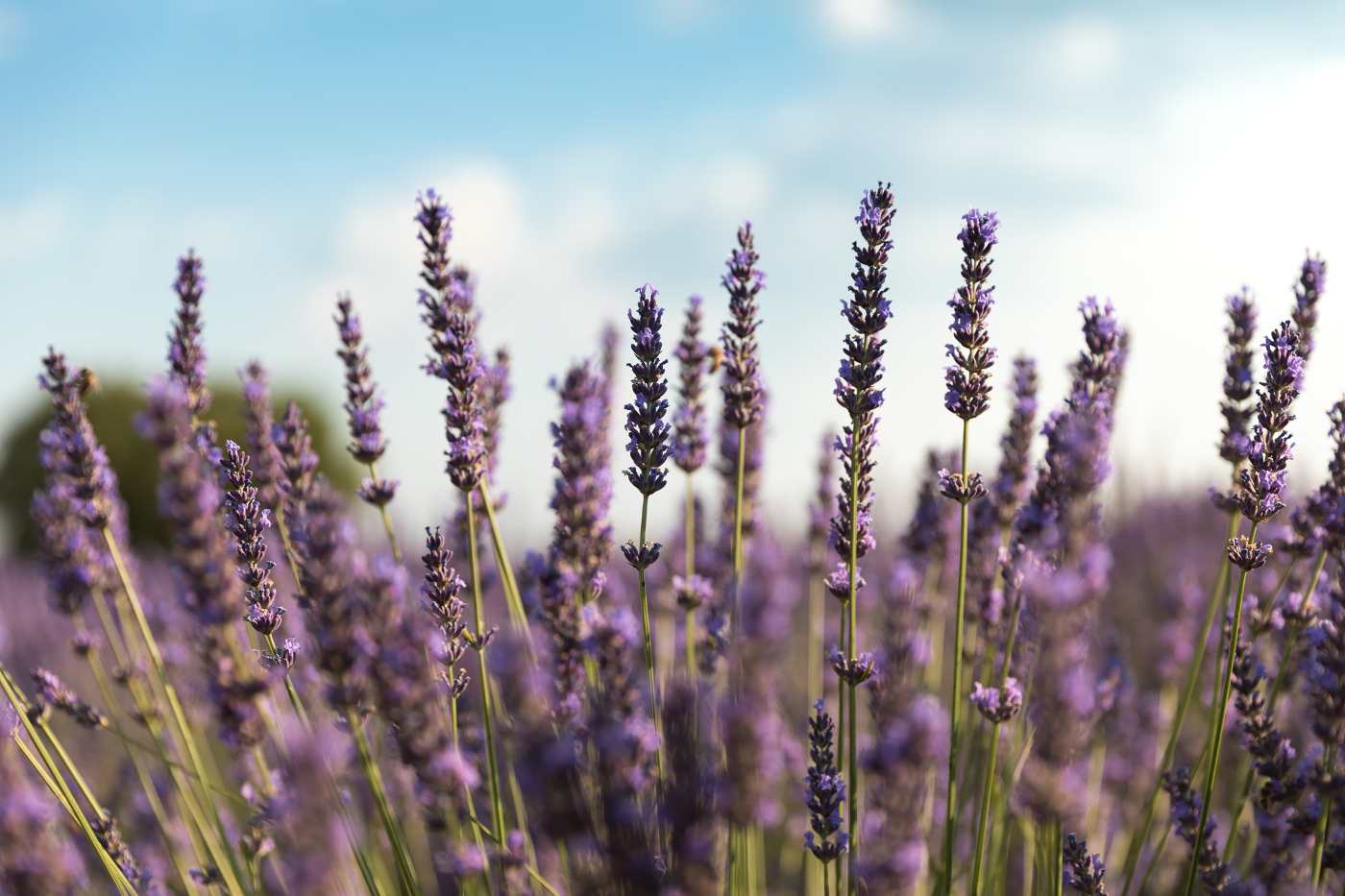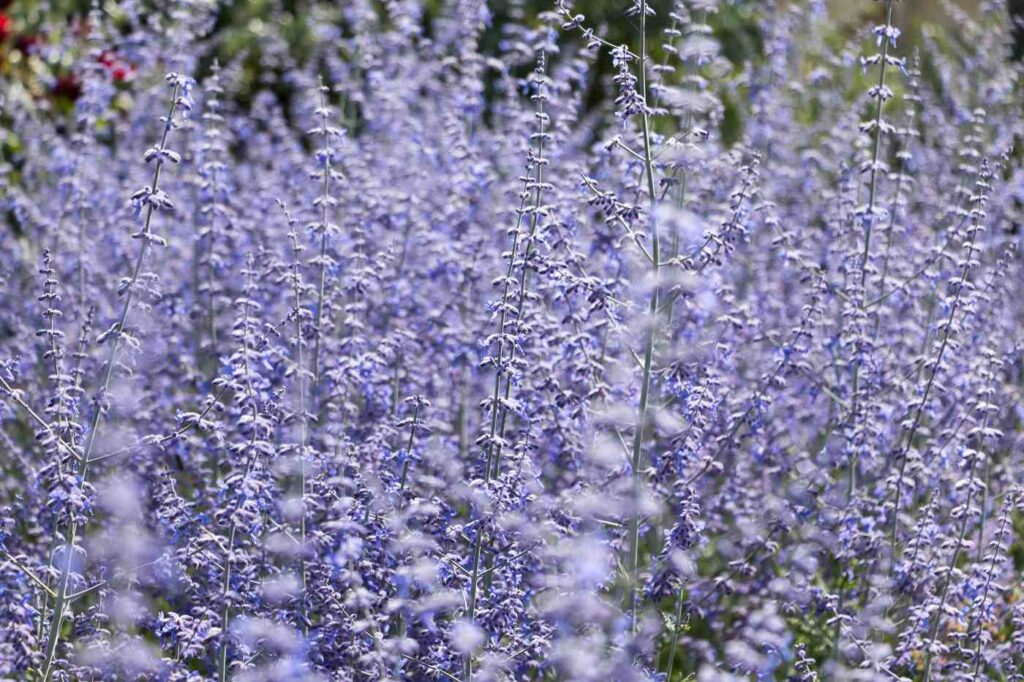Lavender is known for its calming purple color and distinctive scent, which is why plenty of gardeners prefer to have it in their yards. But as iconic as its flowers are, what most don’t know is that lavender actually has a number of lookalikes that can easily fool you.
One of its many doppelgangers is Russian sage, and if you look up its clustered purple blooms, you’ll understand how uncannily alike they can be. Since identifying these two plants from each other can be difficult for the average gardener, below is a list of characteristics that can help you with the process.
Is Lavender the Same as Russian Sage?
You might be more familiar with lavender because of its prominent uses in homes and gardens. It’s a type of semi-shrub that belongs to the Lamiaceae family, and while it’s native to Cape Verde and the Canary Islands, it can now be found in most places of the world.
Russian sage, on the other hand, is more commonly found in Central Asia, specifically in high-altitude areas in Pakistan, Tibet and Afghanistan. But it’s not a coincidence that it looks similar to lavender because it also belongs to the Lamiaceae family. Once you get a good look at the plant, however, you’ll realize that they actually have a lot of differences, including color, smell and inflorescence.
Russian Sage vs Lavender
You have to admit, identifying similar-looking plants is no easy feat for the untrained eye. But knowing their characteristics will definitely help make the process easier.
If you want to plant these lovely shrubs in your garden, you may want to take note of a few of these attributes:
Color
The first thing you’ll probably notice about these two plants is their striking purple shades. While lavender may be more recognizable for its pale purple color, it actually also has other varieties with blue-violet, yellow and pink blooms.
On the contrary, Russian sage will have blue flora with a hint of purple. That’s why its colors look more muted compared to lavender. Although it has seven cultivars available, it retains its blue-purple color throughout. Another characteristic to look for is the color of their stems. Where lavender has green stalks, Russian sage has attractive silvery-gray stems.
Flowers
One sure way of spotting the difference between a lavender plant and Roman sage is by looking at their inflorescences. Also called “flowers,” they’re located at the top of their stems and contain a smaller cluster of blooms that produce seeds when pollinated.
You’ll know that the inflorescences are Russian sage when they have trumpet-shaped blossoms that are spaced apart. Lavender flowers, by contrast, are tightly compact with smaller blooms. The only downside to this identification method is that you’ll have to wait for the proper season for their inflorescences to come out. Russian sage flowers from midsummer to fall, while lavenders typically bloom from mid-spring to early summer.
Smell
Perhaps the biggest giveaway between these two plants is their contrasting smell. Since lavender is often used for perfume and toiletries, you’ll probably already be familiar with its distinctively fresh floral scent. Although you may adore its aroma, some bugs choose to avoid it, which means that lavender can be used as a pest-repellant in your garden.
True to its name, Russian sage may have a fragrance similar to sage, with a hint of mint because of its origins in the mint family. But even though its refreshing herby smell may lure you to eat it, its taste may not be as appealing as you might think. Plus, consuming large quantities of this plant can be toxic, so it’s better to avoid ingesting it in the first place.
Leaves
Another method of differentiating these two shrubs is by looking at their leaves. They may not be as noticeable as their flowers, but zooming in on their details will make the process easier.
Lavender leaves can differ depending on the variety, so you might also want to take note of them if you also want to tell them apart. English lavender has gray-green velvety elongated leaves with smooth edges, while French lavender leaves look more intricate, with toothed edges. Russian sage leaves have wider elongated foliage that has a gray-green shade that can intensify during the summer.
Growing Requirements
Despite their differences, lavender and Russian sage actually share similar growing requirements. Both do best when planted in well-draining sandy soil and exposed to full sun conditions.
Unlike other ornamental plants, they prefer to be left alone to grow, so you won’t need to constantly fertilize them. Since they’re also drought-tolerant, take care to only water them when their soil is completely dry. Note that they’re both water-sensitive and prone to root rot.
Both plants will also need pruning during certain seasons to encourage their growth and prolong their lifespan. You’ll need to prune Russian sage at the end of fall or the beginning of winter, preferably after the first frost when they go dormant. Lavender will need trimming after it blooms in spring or summer.
Which Flower Best Fits Your Garden?
Even though lavender and Russian sage have similar growing requirements, you’ll still have to keep in mind some factors that will determine which will suit your garden better if you ever decide to plant them.
If you’re aiming to incorporate more fragrances into your garden, you’ll want to pick lavender for its potent scent. It’s known to reduce stress and encourage sleep, and aside from using it for tea, you can also incorporate its buds for flavoring desserts and pastries.
If you have the tendency to water frequently, however, Russian sage will be a better option for your garden. Although it’s prone to root rot, it won’t immediately go into shock when it’s overwatered occasionally.
That said, if you can’t choose between the two, there’s no need to stress. Lavender and Russian sage are ideal to plant together in the same plot of soil since they have such similar growing needs, so you can have the best of both worlds.
Images: Depositphotos

